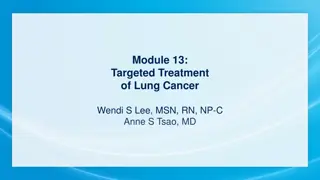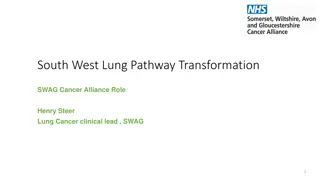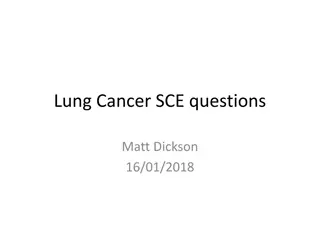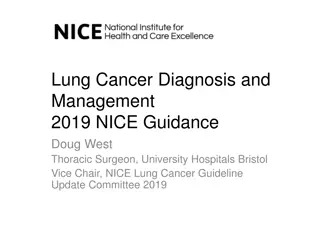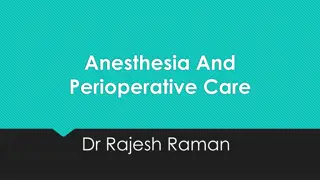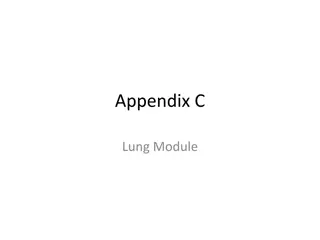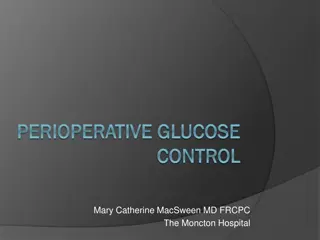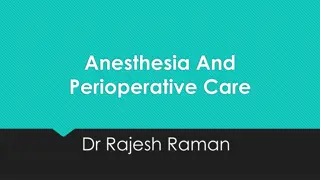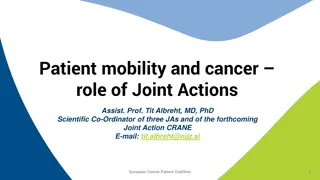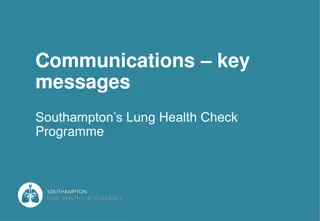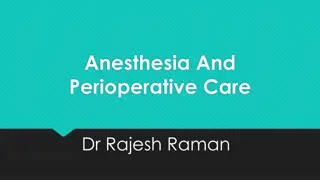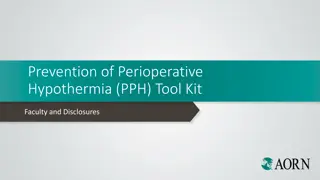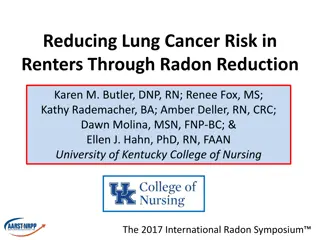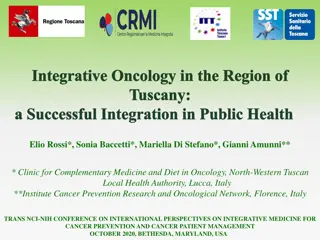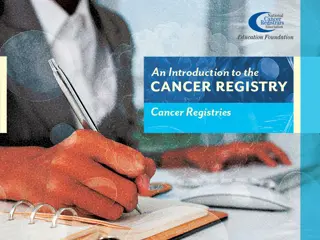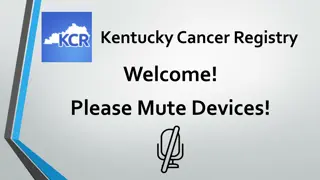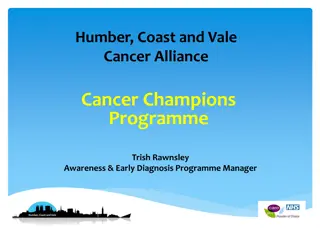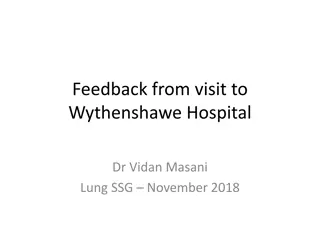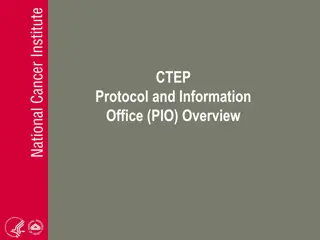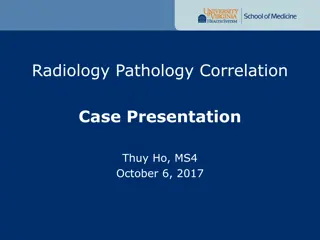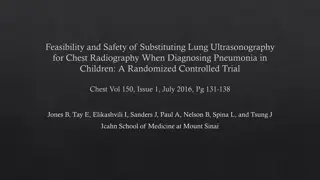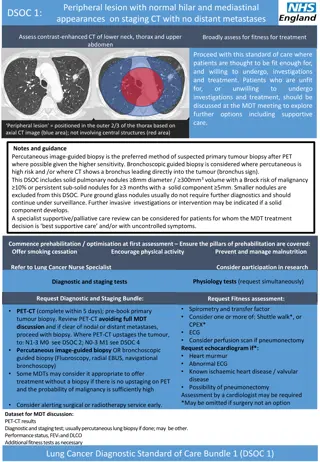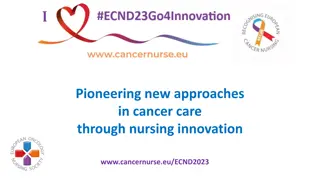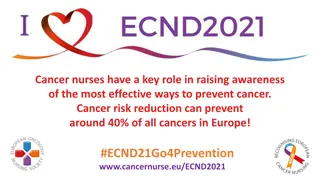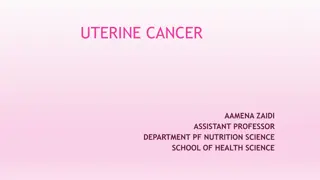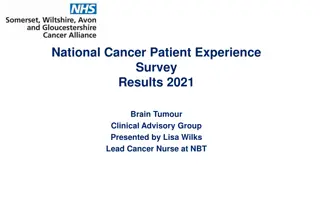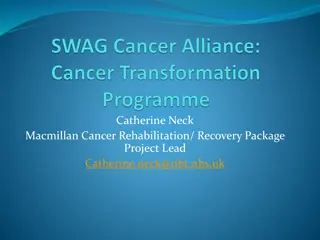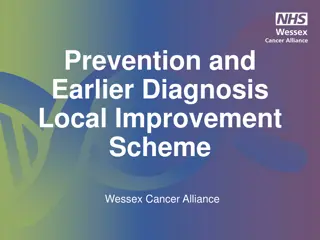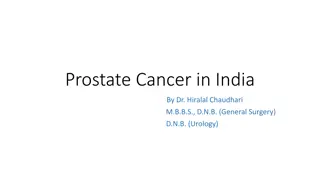Advances in Perioperative Treatment of Lung Cancer: A Comprehensive Review
Explore the evolution of perioperative treatment for lung cancer from historical perspectives to current advancements. Learn about the efficacy of different chemotherapy agents, immunotherapies, and adjuvant treatments, along with the impact on patient outcomes and resectability criteria. Discover the latest NICE approvals for adjuvant therapies in non-small-cell lung cancer patients.
Download Presentation

Please find below an Image/Link to download the presentation.
The content on the website is provided AS IS for your information and personal use only. It may not be sold, licensed, or shared on other websites without obtaining consent from the author. Download presentation by click this link. If you encounter any issues during the download, it is possible that the publisher has removed the file from their server.
E N D
Presentation Transcript
Dr Adam Dangoor University Hospitals Bristol & Weston PERIOPERATIVE SACT IN PERIOPERATIVE SACT IN LUNG LUNG CANCER CANCER
1980s & 1990s Natural history of metastatic lung cancer 10% 1-year survival 1991, SWOG (Albain et al.), 2531 patients Cisplatin an independent predictor of survival BUT does toxicity outweigh benefit? Chemotherapy or best supportive care (BSC)?
Meta Meta- -analysis analysis 1995 1995 NSCLC Collaborative Group Chemotherapy vs BSC 9387 patients 52 randomised trials 10% gain in survival at 1 year Alkalylating agents detrimental chemotherapy may have a role in treating this disease
Advances in management of advanced disease Platinum doublet increases survival by 3-5 months: OS 10.3-12.6 months Maintenance pemetrexed in non-squamous: Added OS of 2.2 months Pembrolizumab immunotherapy in high PDL1 disease, up to 30% 5-year survival Osimertinib in EGFR+ve: OS 38.6 months Alectinib in ALK fusion +ve: OS 29.1 months
Adjuvant chemotherapy Chemotherapy effect higher in patients with better performance status Around 5% benefit in overall survival
For discussion How has treatment changed in the peri-operative setting Optimal timing neoadjuvant vs adjuvant Optimal duration? Do new treatments alter the criteria for resectability?
Current NICE approvals TA761, 01/2022: Osimertinib is recommended for use within the Cancer Drugs Fund as adjuvant treatment after complete tumour resection in adults with stage IB to IIIA (now IB (>3cm) -IIIA, N2 only IIIB) non-small-cell lung cancer (NSCLC) whose tumours have epidermal growth factor receptor (EGFR) exon 19 deletions or exon 21 (L858R) substitution mutations. It is recommended only if: osimertinib is stopped at 3 years, or earlier if there is disease recurrence or unacceptable toxicity TA823, 09/2022: Atezolizumab is recommended for use within the Cancer Drugs Fund as an option for adjuvant treatment after complete tumour resection in adults with stage II to IIIA (now IIB (>5cm), IIIA, N2 only IIIB) non-small-cell lung cancer (NSCLC) whose: tumours have the programmed cell death ligand-1 (PD-L1) biomarker expression on 50% or more of their tumour cells and whose disease has not progressed after platinum-based adjuvant chemotherapy. TA876, 03/2023: Nivolumab with chemotherapy is recommended, within its marketing authorisation, as an option for the neoadjuvant treatment of resectable (tumours at least 4 cm or node positive IIA-IIIA or N2 only IIIB) non-small-cell lung cancer (NSCLC) in adults.
Osimertinib (ADAURA) 3 years of adjuvant Osimertinib +/- chemo x4 5-year OS II-IIA: 85% osimertinib vs 73% placebo In overall trial population IB-IIIA: 88% vs 78% Patients receiving adjuvant chemotherapy and osimertinib had a 5-year OS of 87% vs 80% with osimertinib alone. Questions: Do they need chemo? Use beyond 3 years? Use ctDNA to guide treatment?
Atezolizumab Atezolizumab (IMPOWER (IMPOWER010) 010) Up to 4 cycles of platinum doublet chemotherapy Overall survival only shown in those with PDL1 50% Hazard ratio 0.43 Need to consider the patients who might later receive targeted therapies: IO less effective, late toxicity
Nivolumab ( Nivolumab (CheckMate CheckMate 816) 816) Median event-free survival 31.6 months vs 20.8 months Complete response 24.0% vs 2.2% At interim analysis hazard ratio for death 0.57 (NS) Proportion undergoing surgery 83.2% vs 75.4% EFS benefit by stage: IIIA 0.54 vs IB or II 0.87 PDL1: 50% (HR0.24), 1-49% (0.58), <1% (0.85) Adjuvant chemo given in 11.9% vs 22.2%
Nivolumab (CheckMate 816) In combination arm: Surgery shorter Fewer cancellations Fewer pneumonectomies Greater minimally invasive surgery
Additional treatment During neoadjuvant SACT: Following neoadjuvant SACT and successful resection: i) Adjuvant chemotherapy, radiotherapy or chemoradiotherapy is PERMITTED if indicated. ii) Adjuvant immunotherapy is NOT PERMITTED. i) If disease progression occurs, then further immunotherapy is NOT funded IN ANY INDICATION. ii) If no disease progression but deemed not for surgical resection, further immunotherapy is ONLY PERMITTED following a disease response of at least 6 months (duration from last Nivolumab dose to progressive disease). UNLESS stage III disease and treated with concurrent chemoradiotherapy then potentially eligible for maintenance durvalumab
Does neoadjuvant treatment redefine Does neoadjuvant treatment redefine resectability resectability? ? In various trial of neoadjuvant chemoIO, despite selection for resectability, around 20% did not have surgery R1/2 resections seen in up to around 7% We do not want to take on patients for surgery who could have chemoradiotherapy + IO Advice is that we maintain current standards for resectability assessment
Chemoradiotherapy (PACIFIC) Chemoradiotherapy in stage III unresectable NSCLC Durvalumab for 12 months if no progression after CRT 24-month OS 66.3% vs 55.6% PFS 17.2 m vs 5.6m Median time to death or distant mets 28.3m vs 16.2m
Rapid Advances in Resectable NonSmall Cell Lung Cancer - A Narrative Review. West & Kim. JAMA Oncol 2024;10 (2):249-255
Points to consider Pre-treatment staging NGS or targeted rapid tests not just EGFR relevant Assessment with oncologists before surgeons? When to scan. After 2 or 3 cycles of neoadjuvant treatment?



